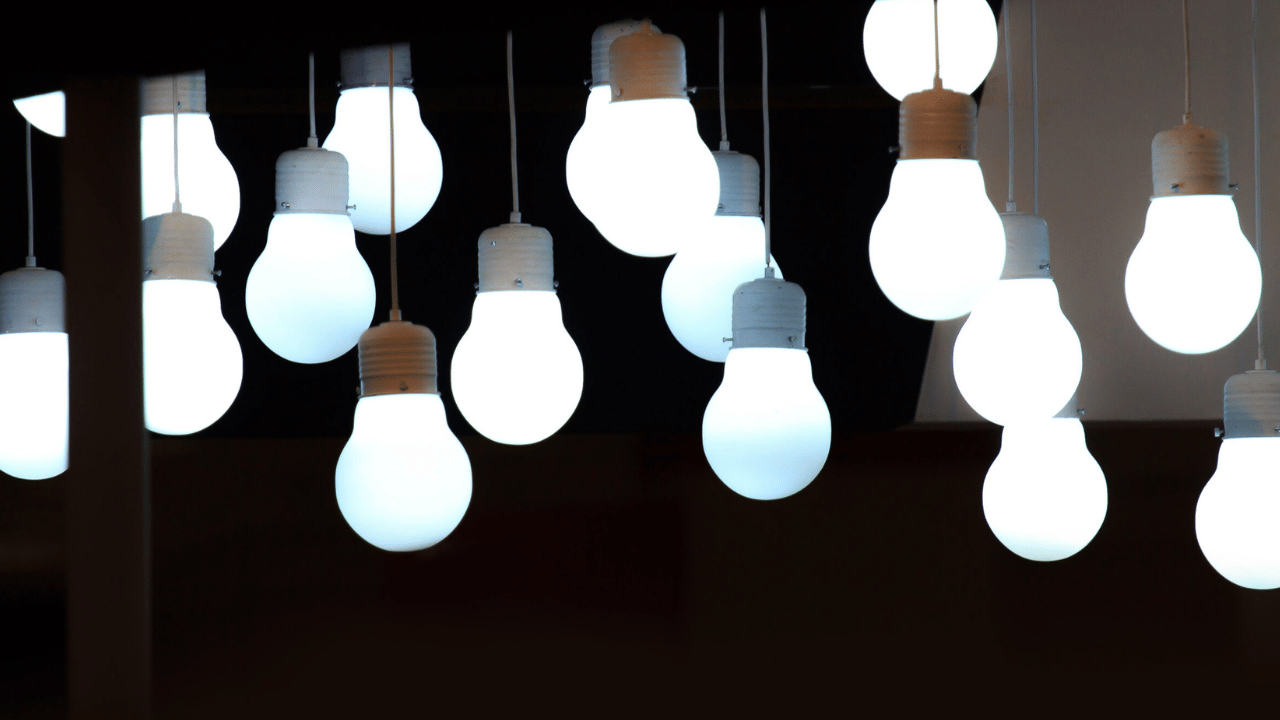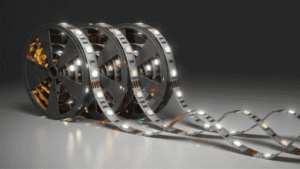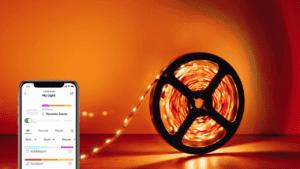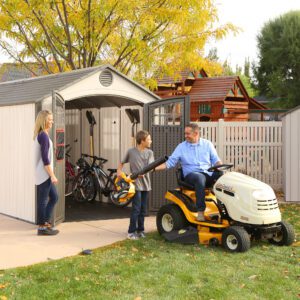
Reduce heat from LED lights by implementing proper ventilation and using heat sinks. LED lights produce less heat compared to traditional bulbs, but excessive heat can still affect their performance and lifespan.
Adequate ventilation allows for better airflow, while heat sinks dissipate heat effectively, preventing overheating issues. Ensuring proper installation and placement can also minimize heat buildup around LED lights, maximizing their efficiency and longevity. Implementing these strategies reduces heat and enhances LED lights’ overall performance and durability.
Proper measures allow you to enjoy the benefits of energy-efficient lighting without worrying about excessive heat.
Understanding The Thermal Challenges Of LED Lights
Discover effective strategies to reduce heat from LED lights and improve their performance. In this insightful article, gain a deeper understanding of LED lights’ thermal challenges and explore practical solutions for heat management.
The lighting industry has been significantly transformed by LED lights due to their impressive energy efficiency and extended lifespan. Nevertheless, they are not without their thermal challenges, as they produce heat that can affect their performance and durability. It’s essential to grasp these thermal issues associated with LED lights to guarantee their optimal functioning and mitigate potential heat-related problems.
The Basics Of LED Lighting And Heat Generation
It’s essential to grasp the basics of LED lighting and heat generation to comprehend the thermal challenges of LED lights. Here’s what you need to know:
- LED lights produce light through electroluminescence, where electricity passes through semiconductors.
- While LED lights are energy-efficient, they still generate heat during operation due to the energy conversion process.
- The heat is primarily produced by the LED and the driver circuitry within the light fixture.
- Heat dissipation is crucial for adequately functioning LED lights, as excess heat can negatively affect their performance and lifespan.
How Heat Can Affects the Performance and Lifespan of LEDs?
Heat can significantly impact the performance and lifespan of LED lights. Here’s how:
- Reduced Efficiency: Excessive heat can lead to reduced efficiency in LED lights, causing them to produce less light for the same amount of energy input. This decline in efficiency can result in dimmer lights or reduced lighting coverage.
- Color Shift: Elevated temperatures can induce alterations in the color output of LED lights, resulting in shifts that can impact the fidelity of the emitted light. This issue can pose significant challenges in settings where precise color representation is crucial, such as in art galleries or retail environments.
- Shortened Lifespan: High temperatures can shorten the lifespan of LEDs, resulting in premature failures. Heat affects various components of LED lights, including the diode itself, the driver circuitry, and the phosphor coating. Prolonged exposure to heat can degrade these components and ultimately lead to the failure of the light fixture.
- Thermal Runaway: If the heat generated by an LED light exceeds its ability to dissipate, the temperature can continue to rise, leading to a phenomenon known as thermal runaway. Thermal runaway can cause irreversible damage to the LED and complete failure.
Proper heat management is crucial for maintaining the performance and longevity of LED lights. Implementing effective heat dissipation techniques, such as heat sinks, thermal pads, and proper ventilation, can significantly reduce LED lights’ heat-related challenges.
By understanding the thermal challenges of LED lights and taking appropriate measures to manage heat, you can ensure optimal performance, longevity, and energy efficiency of your LED lighting installations.
Selecting The Right Led Lights For Heat Management
LED lights are an excellent energy-efficient choice, but managing heat can be challenging. Learn how to reduce heat from LED lights effectively with these helpful tips.

LED lights are popular due to their energy efficiency and long lifespan. However, one issue with LED lights is excessive heat generation, which can affect their performance and lifespan. Selecting LED lights designed with efficient heat dissipation mechanisms is essential to ensure optimal heat management.
This section will explore the factors to consider when choosing LED lights for effective heat reduction.
Choosing LED Lights With Efficient Heat Dissipation Mechanisms:
- Opt for LED lights with built-in heat sinks: LED lights incorporating heat sinks are designed to dissipate heat efficiently. These heat sinks typically consist of metal fins or plates that help absorb and dissipate heat away from the LEDs.
- Consider LED lights with thermal pads: Some LED lights are equipped with thermal pads, which interface the LED and the heat sink. Thermal pads facilitate heat transfer from the LED to the heat sink, allowing for effective heat dissipation.
- Look for LED lights with good thermal management: Thermal management is important when selecting LED lights. Good thermal management ensures that the heat generated by the LEDs is effectively dissipated, preventing overheating and potential damage to the LEDs.
- Check for proper ventilation: LED lights with appropriate ventilation mechanisms, such as vents or fans, can help to enhance heat dissipation. Adequate ventilation allows for better airflow around the LEDs, promoting cooling and reducing heat buildup.
- Consider LED lights with efficient power supplies: LED lights with high-quality and efficient power supplies can reduce heat generation. Efficient power supplies minimize energy loss, which leads to less heat being produced.
- Look for LED lights with lower wattage: LED lights with lower wattage generate less heat. Opting for LED lights with lower wattage can minimize heat buildup and improve heat management.
Factors To Consider When Selecting LED Lights For Heat Reduction:
- Lumens per watt (LPW) efficiency: The LPW efficiency indicates how much light the LED light produces per watt of energy consumed. LED lights with greater lumens per watt (LPW) efficiency tend to produce less heat, making them a preferable option for reducing heat.
- Operating temperature range: Considering the operating temperature range specified by the LED light manufacturer is crucial. LED lights with more comprehensive operating temperature ranges are typically better equipped to handle heat and maintain optimal performance.
- Quality of materials: Opt for LED lights that are made with high-quality materials. Quality materials contribute to better heat dissipation and overall durability of the LED lights.
- Lifespan and warranty: LED lights with longer lifespans and comprehensive warranties assure their reliability and durability. Longer lifespans indicate that the LED lights are designed to manage heat effectively.
By considering these factors and opting for LED lights with efficient heat dissipation mechanisms, you can reduce heat buildup and ensure the longevity and performance of your LED lighting system.
Implementing Effective Heat Management Techniques For LED Lights
Implement effective heat management techniques for LED lights to reduce heat and extend lifespan. Discover tips and tricks to prevent overheating, such as proper ventilation, heat sinks, and thermal management materials.
LED lights are known for their energy efficiency and long lifespan. However, they also generate heat, and if not managed properly, this can affect their performance and durability. Several heat management techniques can be implemented to ensure the optimal functioning of LED lights and reduce heat buildup.
Here are some effective strategies to consider:
Proper Ventilation And Airflow For LED Light Fixtures:
Ensuring adequate ventilation and airflow around LED light fixtures is crucial for heat dissipation. Consider the following measures to promote proper ventilation and airflow:
- Provide sufficient space between LED fixtures and other objects to allow air circulation.
- Use exhaust fans or ventilation systems in enclosed spaces to remove hot air and introduce cool air.
- Install vents or heat sinks in LED fixtures to enhance heat dissipation.
- Position LED fixtures where natural airflow is available, such as near windows or doors.
Using Heat Sinks And Thermal Management Materials For LED Lights:
Heat sinks are effective tools for dissipating heat generated by LED lights. Employ these strategies for utilizing heat sinks and thermal management materials effectively:
- Attach heat sinks to the back of LED modules to draw heat away from the components.
- Opt for heat sinks with larger surface areas for improved heat dissipation.
- Apply thermal interface materials, such as thermal pads or thermal grease, between LED modules and heat sinks to enhance heat transfer.
- Consider finned heat sinks, which provide increased surface area and better airflow.
Optimizing Led Driver Efficiency To Minimize Heat Generation:
LED drivers are crucial in LED lights’ overall performance and heat generation. Follow these guidelines to optimize LED driver efficiency:
- Choose LED drivers with high power factor and low total harmonic distortion (THD) to minimize inefficiencies and heat generation.
- Ensure LED drivers have the correct voltage and current ratings for the LED light setup to prevent overheating.
- Utilize dimming controls compatible with the LED drivers to regulate the power and reduce heat output.
- Regularly inspect and maintain LED drivers to ensure optimal performance and efficiency.
The Role Of Ambient Temperature Control In Reducing Led Heat:
Ambient temperature dramatically influences the heat buildup in LED lights. Pay attention to the following aspects for proper ambient temperature control:
- Avoid installing LED lights in areas with high ambient temperatures, as this exacerbates heat generation.
- Provide sufficient ventilation and cooling systems in environments where LED lights are used.
- Monitor ambient temperature regularly and adjust cooling measures as necessary.
- Consider using temperature sensors to regulate LED light output based on ambient conditions.
Incorporating these effective heat management techniques for LED lights ensures their longevity and enhances their performance and efficiency. You can effectively minimize heat buildup and maximize the benefits of LED lighting by implementing proper ventilation, utilizing heat sinks, optimizing LED drivers, and controlling ambient temperature.
Common Mistakes To Avoid In Led Light Heat Reduction
Were you looking to reduce heat from LED lights? Avoid common mistakes such as poor ventilation, overcrowding, inadequate heat sinks, improper mounting, ignoring manufacturer guidelines, and disregarding ambient temperature. Follow these tips for effective heat reduction and improved LED performance.
Do you want to maximize your LED lights’ lifespan while minimizing heat generation? Avoiding common mistakes is the key. In this section, we’ll discuss two critical mistakes people make when reducing heat from LED lights.
To guarantee optimal performance and maintain a cool temperature for your LED lights, it’s crucial to grasp and steer clear of these errors.
Overdriving Led Lights And The Impact On Heat Generation
Overdriving LED lights can significantly increase heat generation. It occurs when the LED lights are operated at higher current levels than the manufacturer recommends. Here’s why overdriving LED lights can be problematic:
- Increased heat: Excessive power input to LED lights generates excess heat, leading to performance deterioration and a shortened lifespan for the LEDs.
- Reduced efficiency: Overdriving can lower the overall efficiency of the LED lights, leading to increased energy consumption and higher maintenance costs.
- Color shift: Overdriving can cause color shifts in LED lights, resulting in inaccurate and inconsistent lighting.
By providing the appropriate power supply, you can ensure the longevity and efficiency of your LED lights.
Improper Installation And Insufficient Energy Dissipation
Improper installation and insufficient energy dissipation can increase heat retention within LED light fixtures. Here are some common mistakes to avoid:
- Poor ventilation: Installing LED lights in enclosed or poorly ventilated fixtures can hinder heat dissipation, leading to higher operating temperatures.
- Inadequate heat sinks: Heat sinks play a crucial role in dissipating heat generated by LED lights. Using improper or undersized heat sinks can restrict heat transfer and cause heat buildup.
- Insufficient spacing: Insufficient spacing between LED fixtures can result in heat accumulation, as it restricts airflow that aids in cooling.
To address these issues:
- Ensure proper ventilation by selecting fixtures for heat dissipation.
- Choose suitable heat sinks that provide efficient cooling capabilities based on your LED light’s requirements.
- Ensure sufficient spacing between LED fixtures to allow proper airflow and reduce heat buildup.
Neglecting Maintenance And Cleaning Of Led Light Fixtures
Proper maintenance and regular cleaning of LED light fixtures are often overlooked but are crucial in heat reduction. Here’s why neglecting maintenance and cleaning can lead to increased heat generation:
- Dust accumulation: Dust buildup on LED light fixtures can obstruct airflow, impeding heat dissipation and causing the lights to operate at higher temperatures.
- Reduced performance: Accumulated dirt and grime on LED lights can reduce their efficacy and increase the need for higher power consumption, resulting in more heat generation.
- Diminished lifespan: Neglected maintenance can lead to premature failure of LED lights, reducing their overall lifespan and reliability.
To prevent these issues, regularly clean the fixtures and remove any accumulated dust or debris. Use non-abrasive cleaning methods to avoid damaging the LED lights. Additionally, schedule routine maintenance checks to identify and address any issues promptly.
By avoiding these common mistakes and implementing proper heat reduction strategies, you can enhance the performance and longevity of your LED lights while maintaining a cool operating temperature.
Advanced Techniques For Reducing Heat From Led Lights
Learn advanced techniques to reduce heat from LED lights effectively. Discover practical tips and solutions for optimizing LED lighting performance without compromising energy efficiency or longevity.
LED lights are known for their energy efficiency and long lifespan. However, excessive heat is a common challenge in LED lighting systems that can reduce their efficiency and impact their lifespan. This section will explore advanced techniques that can effectively reduce heat from LED lights, ensuring optimal performance and longevity.
Active Cooling Methods For Led Light Fixtures:
Active cooling methods are often employed to tackle heat dissipation in LED light fixtures. These methods involve using additional components or systems to remove heat from the lights actively. Here are some commonly used active cooling techniques:
- Fans: Incorporating fans into LED light fixtures help to dissipate heat by increasing airflow around the lights.
- Heat sinks: Heat sinks are designed to absorb and dissipate heat away from the LED lights through thermal conduction.
- Thermoelectric coolers: These devices use the Peltier effect to transfer heat away from the LED lights, providing efficient cooling.
- Phase change materials: These materials absorb heat generated by LEDs, undergo a phase change, and then release the absorbed heat, contributing to effective cooling.
Exploring Liquid Cooling Systems For Leds:
Liquid cooling systems offer an innovative approach to effectively managing heat in LED lighting applications. These systems utilize liquid coolant to dissipate heat from the lights. Here’s why liquid cooling is a compelling choice:
- Increased efficiency: Liquid cooling systems provide higher heat dissipation capabilities compared to traditional cooling methods.
- Uniform cooling: The coolant circulates and spreads heat evenly across the LED lights, preventing localized hotspots.
- Noise reduction: Liquid cooling systems operate quietly, making them suitable for noise-sensitive environments.
- Compact design: These systems can be designed to fit tight spaces, making them ideal for various LED lighting fixtures.
Incorporating Heat Pipes And Heat Exchangers For Enhanced Heat Reduction:
Heat pipes and heat exchangers are practical tools for heat reduction in LED lighting systems. These techniques efficiently transfer and dissipate heat, addressing thermal management concerns. Consider the following benefits of using heat pipes and heat exchangers:
- Efficient heat transfer: Heat pipes are designed to quickly conduct heat away from the LED lights, significantly reducing operating temperatures.
- Versatility: Heat exchangers can be integrated into various LED lighting fixtures, ranging from small-scale residential applications to large-scale commercial installations.
- Cost-effective: Heat pipe technology offers excellent heat transfer efficiency at affordable costs.
- Enhanced reliability: Heat pipes and heat exchangers contribute to the increased reliability of LED lights by effectively reducing heat-related stress on the components.
You can effectively mitigate heat-related issues in your LED lighting systems by employing active cooling methods, exploring liquid cooling systems, and incorporating heat pipes and heat exchangers. These advanced techniques not only enhance the performance and lifespan of the lights but also provide efficient thermal management, ensuring optimal functionality in various applications.
Frequently Asked Questions For How To Reduce Heat From Led Lights?
Why Are My LED Lights So Hot?
LED lights can become hot due to the electronic components’ heat.
How Do You Cool Led Bulbs?
To cool LED bulbs, ensure they are placed in a well-ventilated area to dissipate heat effectively.
Is It OK for LED Lights to Get Hot?
LED lights getting hot is not normal and can indicate a problem.
How Can I Reduce Heat From Led Lights?
You can use heatinks or cooling fans to reduce heat from LED lights, which help dissipate the heat more effectively. Ensuring proper ventilation in the installation area and avoiding overcrowded fixtures can also help reduce heat buildup. Additionally, utilizing dimmers or adjusting the brightness of the LEDs can minimize heat output.
Conclusion
Reducing heat from LED lights is crucial to ensure optimal performance and longevity. You can effectively minimize heat buildup by implementing simple strategies, such as using heat sinks, proper ventilation, and providing correct installation. Additionally, selecting LED lights with high-quality components and efficient designs can help significantly decrease heat generation.
It is important to remember that excessive heat can not only impact the lifespan of the LEDs but also compromise their overall efficiency. Reducing heat is a worthwhile investment, considering the potential energy savings and environmental benefits of LED lighting.
By following these guidelines, you can enjoy the benefits of LED lighting while maintaining a relaxed and comfortable environment. Don’t let heat hold you back—take action today and reap the rewards of a well-regulated LED lighting system.








